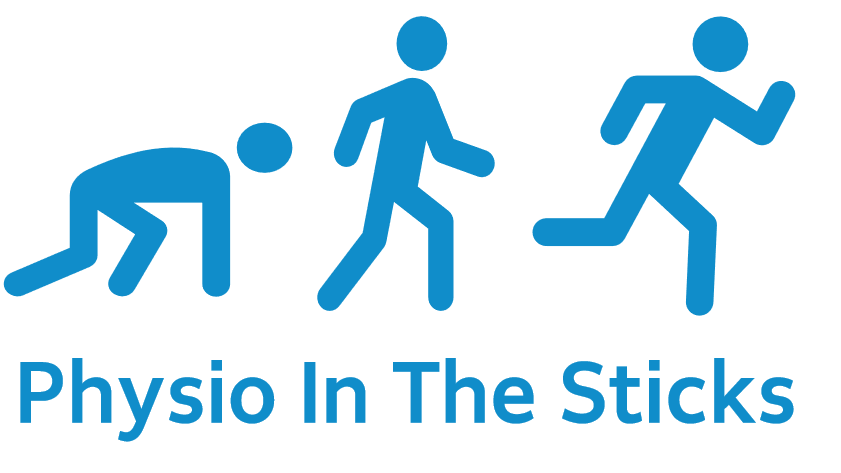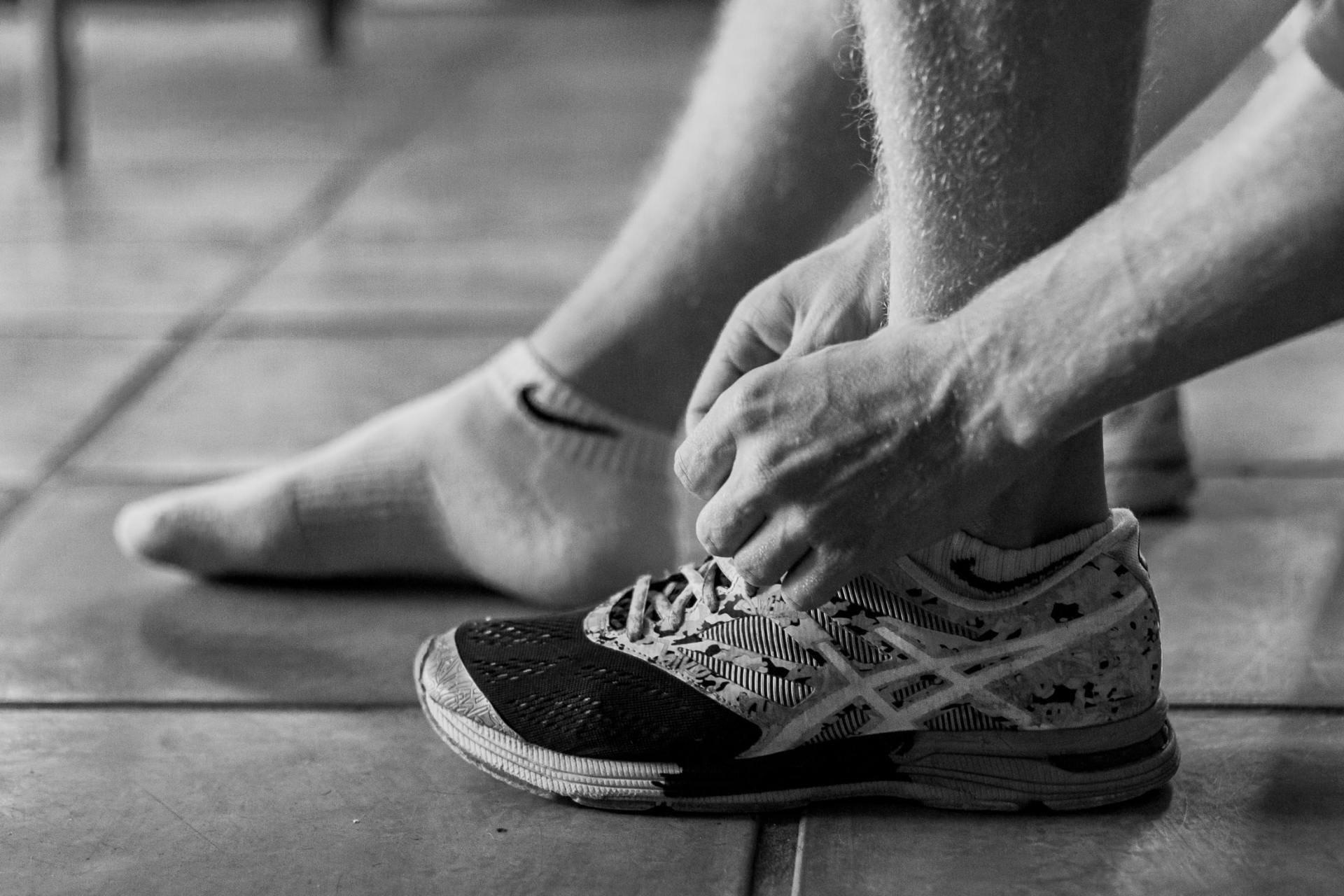If you have chronic ankle pain, heel pain or foot pain, sudden acute heel pain or an ankle ligament sprain, you can now see a physiotherapist at home or online. Whether you have a sport you want to return to or to get back to everyday activities pain free, we can help. By putting you at the centre of the treatment plan and considering your needs and goals we can help you recover.
High quality, modern, private physiotherapy gives time to answer all your questions, help you understand the issue and develop a detailed treatment plan that includes so much more than your muscles and joints. Build confidence moving and exercising with friendly, professional guidance.
Ankle and Foot Pain
Getting a medical assessment from your GP is recommended in the following circumstances:
In the event of any significant injury or trauma to the foot or ankle, if you are unable to put weight through your foot, if your pain levels are severe, if you have developed altered sensation, temperature changes or weakness in the foot, if you have developed swelling - especially if it is hot and red.
Ankle sprain
Ankle sprains occur when the ligaments of the ankle are damaged when excess forces placed upon them. Injury to the ankle ligaments is one of the most common ankle injuries accounting for 3-5% of all UK A&E visits per year with around 800 occurring every day. The ligaments on the
outside of the ankle are the most commonly injured accounting for 85% of all ankle sprains, with injury to the higher ankle ligaments accounting for around 9% and the ligaments on the inside of your ankle 6%. The ankle is a stable joint because of the number of ligaments it has around it, however
when excessive movements in any direction are forced upon the ankle sometimes the muscles don’t respond quick enough to prevent damage. The outside ligaments are often injured when the foot twists inwards (inversion) either with the whole foot on the ground or when on your tip toes, the inside ligaments are often injured when the foot twists outwards on the leg (eversion) and the high ankle ligaments are often injured when
the foot is rotated outwards. Ankle sprains are often sports injuries where running, jumping and changing direction at speed were involved but you could also injure the ligaments stepping off a curb when not paying attention or walking up or down stairs and missing one.
The severity of ankle sprain is graded 1-3
Grade 1 -Mild swelling / bruising 0-10% of fibres damaged.
Grade 2 - Moderate swelling / bruising, 10-50% fibres damaged and often associated with the feeling
of the ankle being unstable when walking or moving around.
Grade 3 -Significant swelling / bruising, 50-100% ligament damage. You will likely have trouble walking on an injury like this.
If you cannot put any weight through your foot and ankle then you should get checked at A+E to make sure you haven’t broken any of the bones as this would require different management
Once your pain / swelling begins to improve, you will need to start some exercises to make sure the muscles and joint regain their strength again. These exercises should get progressively harder as you improve. 20% people suffer from a re-current ankle sprain within the first 12 months. To prevent the likelihood of this happening it is important to incorporate some of the included balance and strength exercises into your weekly routine or as part of your warm-up before playing sport.
Stress Fracture
A stress fracture of the foot is the development of a partial fracture or crack in one of the bones in your foot. Stress fractures are common in those who have changed their activity or the surface that they exercise on. Stress fractures may also occur as a result of a medical condition called osteoporosis that weakens the bones. Although any bone in the foot may sustain a stress fracture, the heel, bones in the mid-foot and 2nd and 3rd toes are the most common areas. This is due to the fact that these bones endure the greatest forces in weight-bearing activities. When bone is unable to withstand repetitive mechanical loading (such as long distance running), it results in structural fatigue and localized bone pain and tenderness in the foot bones.
The pain is worse when putting weight on the injured area and the pain is relieved when resting, although as the condition progresses pain may still be felt at rest and at night. Symptoms may include a gradual onset of pain (often described as a toothache type of pain) that increases with walking and running. There may be mild to moderate swelling along with tenderness to touch the area.
However not all stress fractures have these symptoms. Bone is a live tissue and is constantly remodelled, but if the bone tissue does not adapt to a load quickly a weak area can develop into a stress fracture. Diagnosis is confirmed by a mix of clinical assessment by your physiotherapist along with a scan. Typically X-rays are requested to detect this injury but they may not always highlight the problem. Therefore MRI and bone scans are usually better able to identify this issue. Less than 1% of the people develop stress fractures and with the correct management will heal within 6 weeks with a return to activities within 16 weeks. Sometimes a stress fracture will not heal as quickly or fails to heal and therefore requires surgery.
Extensor Tendinopathy
is caused by swelling of the tendons over the top of the foot which can be caused by over loading the tendons or by tight lacing of footwear or tight shoes. Pain can be felt when pressing on the area or pointing the toes towards the ground., pushing off from the ground when you run, jump or dance. You may feel weakness and muscle spasm, have a reduced range of movement and difficulty balancing.
Posterior Tibial Tendinopathy
The tibialis posterior is a muscle in the lower leg. The tendon from this muscle runs behind the inside bone on the ankle, across the instep and attaches to the bottom of the foot. The tibialis posterior is important as it helps to hold the arch of the foot up and stops the foot rolling over. Sometimes the tendon becomes stretched and inflamed and the arch of the foot flattens.
Anterior Tibial Tendinopathy
Pain and often swelling is felt in the inside front of the ankle and the middle of the foot. This is most common aged 45+ years and it is aggravated by activities such as standing and walking.
Sinus Tarsi Syndrome
Following an injury to the ankle or foot or overuse pain may be felt on the outside of the foot slightly forward from the ankle bone. It may be difficult to walk on unstable surfaces and there may also be a feeling of instability. It may also occur if the person has a flat foot (pes planus) or an overpronated foot, which can cause compression in the sinus tarsi. S and a feeling of instability or difficulty walking on unstable surfaces.
Achilles Tendon Rupture
The Achilles tendon is a large band-like structure connecting your calf muscle to the back of your heel. It is very strong and robust, and provides power and movement to our ankles when we walk, run and jump. Common symptoms are sudden, sharp pain in the back of your leg which usually settles into a dull ache, swelling/bruising around the back of the ankle, difficulty walking or standing on your tip toes, the feeling of being kicked or hit in the calf at the time of injury, a pop/ crack may be heard at the time of injury.
The term rupture is used to describe a complete tear of the tendon into two parts, whereas “tear” describes a partial injury to the tendon with a degree of its fibres remaining intact. The extent of the injury will affect which treatments are most appropriate for
recovery. Achilles tendon ruptures most commonly affect adults aged 30-50 and tend to occur in men more than women, particularly those who are intermittently active. For example, individuals who play recreational sports on the weekend whilst being relatively inactive for the rest of the week. They are most likely to happen suddenly in situations where you need to push off forcefully with your foot, such as when quickly changing pace from walking to running. If you think you may have ruptured your Achilles tendon, it is important to see your doctor urgently or attend your nearest minor injuries unit for an assessment.
Achilles Tendinopathy
is an injury to the tendon that joins the calf muscles to your heel bone. You may feel pain, stiffness and sometimes swelling that makes it difficult for you to walk about or move normally. Standing on tip toe, jumping and climbing stairs can be particularly difficult. It especially affects people who do jumping and running exercises such as football, rugby, tennis and athletics. Achilles tendinopathy pain can come and go. It may be worse first thing in the morning or after you’ve done some exercise or activity. Your tendon may feel particularly stiff if you have not moved around for a while — sitting on the sofa or on a car journey. The stiffness usually eases when you start moving about again. You may feel a combination of these symptoms - increasing pain, usually at the calf or heel,
stiffness in the tendon, swelling at the back of your ankle, the tendon is tender to touch, a grating noise or creaking feeling (known as crepitus) when you move your ankle up and down. Sudden pain in your heel or calf may mean you have torn the tendon. This is called an Achilles tendon rupture. The tendon becomes swollen and sore, and you may even hear it snap. - it can sound like a low calibre gunshot If this happens, seek urgent medical advice. To ease the symptoms of Achilles tendinopathy you should rest the tendon by reducing or stopping the activity that started your symptoms. If your pain eases, you may be able to do some gentle stretches. If you can, carry on putting weight on your leg by standing up and doing some gentle walking. You should avoid uphill and downhill running until the pain has stopped. You can apply cold packs or ice wrapped in a towel to ease the pain and reduce any swelling. An orthotic insole or gel heel cup in each shoe that lifts your heel slightly may reduce the stress on your Achilles tendon. Wearing well-padded and supportive shoes may also help. If your symptoms do not improve after a week, you may find it useful to see a physiotherapist for further guidance and rehabilitation.
Heel Spurs (Osteophytes)
are bony bumps (bone spurs) that grow on the heel bone. They often form next to joints affected by osteoarthritis, a condition that causes joints to become stiff and painful. Heel spurs do not always cause symptoms but they can cause problems if they rub against other tissue such as tendons or muscles, restrict movement, compress nearby nerves. A physiotherapist may also be able to help you by recommending exercises that can strengthen the muscles surrounding the problem area, and by helping to improve your range of movement. There's usually no need to remove an heel spur unless it's irritating a nerve or restricting your range of movement or mobility.
Plantar Fasciitis
is where you have pain and stiffness on the bottom of your foot, under your heel and arch. It can feel worse first thing in the morning when you step out of bed or when you have been sitting down for a while and get up to move. The pain may ease once you have been moving around for a while. Plantar fasciitis can make it difficult to lift your toes off the floor. To help your symptoms you can
put an ice pack (or bag of frozen peas) in a towel on the painful area for up to 20 minutes every 2 to 3 hours, wear wide comfortable shoes with a low heel and soft sole, use soft insoles or gel heel pads in your shoes, see a physiotherapist who can help you with some regular gentle stretching exercises and try exercises that do not put pressure on your feet, such as swimming. You should avoid walking or standing for long periods, do not wear high heels or tight pointy shoes, do not wear flip-flops or backless slippers, try not to walk barefoot on hard surfaces.
Tarsal Tunnel Syndrome
starts when the posterior tibial nerve is compressed on its route past the inside of the ankle, beneath the a fibrous band called the flexor retinaculum. When the nerve is compressed it causes pain, tingling, a burning sensation, and sometimes occasionally numbness on the sole of your foot. The symptoms may also be aggravated by moving your ankle up and down. If you have flat feet (pes planus) you have an increased risk of developing this problem. This is because the change in shape of the rear foot, lead to both stretching and compression of the posterior tibial nerve. It can also be caused if there is inflammation on the inside of the ankle. This may be from a previous injury or overuse of tendons. Sometimes it may be caused by a cyst or ganglion pressing on the nerve. You may also be more likely to have tarsal tunnel syndrome if you are diabetic or have arthritis. Initially it may help to reduce your activity, to allow the symptoms to settle naturally. If you would like to walk to maintain your fitness, avoid walking up hills and keep to flat ground. Avoid wearing flat shoes ( such as ballet pumps, flip-flops, backless slippers) and wear a pair with a 2cm heel ( not a mid or high heel), as this will help to reduce the compression on the nerve - trainers may be most comfortable. An insole to change the rear foot position when standing and walking can help to relieve the pressure on the nerve and therefore help with the symptoms.
Morton's Neuroma
is where a nerve in your foot is irritated or damaged. This usually affects between your 3rd and 4th toes ( big toe is number one and little toe is number 5). The main symptoms are a shooting, stabbing or burning pain, feeling like a small stone is stuck under your foot. Some people may also have tingling or numbness in their foot. The symptoms may be worse when you move your foot or wear tight or high-heeled shoes and it often gets worse over time. You can try to rest and raise your foot when you can,
hold an ice pack (or bag of frozen peas) in a towel on the painful area for up to 20 minutes every few hours, wear wide, comfortable shoes with a low heel and soft sole, use soft insoles or metatarsal pads to put into your shoes, try to lose weight if you're overweight. You should avoid tight, pointed shoes. You should see your GP if the pain is severe or stopping you doing your normal activities, the pain is getting worse or keeps coming back, the pain hasn't improved after treating it yourself for 2 weeks, you have any tingling or numbness in your foot or if you have diabetes.


